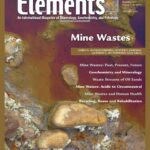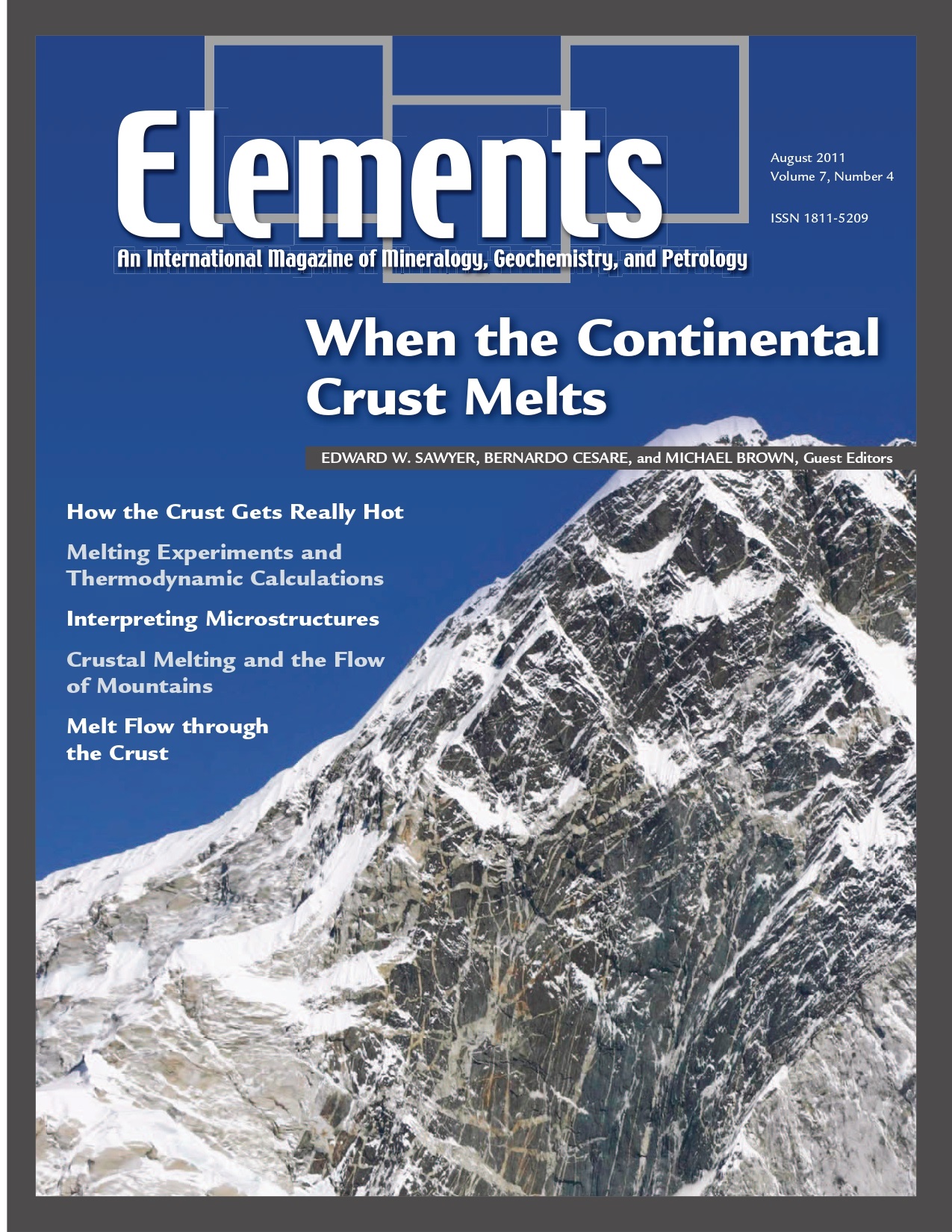
Sustainable Remediation Of Soils, December 2010, Vol. 6, No. 6
June 28, 2024
Mine Wastes, December 2011, Vol. 7, No. 6
June 28, 2024When The Continental Crust Melts, August 2011, Vol. 7, No. 4
$20.00
Partial melting is the most important process affecting the continental crust. It is responsible for the large-scale compositional and density structure that has stabilized the crust over geological time.
When The Continental Crust Melts
August 2011, Vol. 7, No. 4
Partial melting is the most important process affecting the continental crust. It is responsible for the large-scale compositional and density structure that has stabilized the crust over geological time. Partial melting occurs extensively in the deep crustal roots of mountain ranges that form where continents collide. The thin film of melt that develops on the edges and faces of mineral grains results in a substantial weakening of the crust, which concentrates deformation into the melt-bearing rocks and allows them to deform faster. This issue of Elements deals with the source of the heat responsible for widespread melting and the information that can be retrieved from mineral assemblages and microstructures in lower crustal rocks. It also explores the mechanisms of melt transfer and the large-scale geodynamic consequences of melting the crust as it deforms.
Why You’ll Love Elements Magazine:
- Expert Contributors: Articles written by renowned researchers in the field of geoscience.
- Engaging Content: Join a community of readers who are passionate about Elements.
- Exceptional Quality: Each issue is printed on high-quality paper with stunning visuals and detailed illustrations that bring complex scientific concepts to life.
Order your copy of the August 2011 issue of Elements magazine today and find out what happens when the continental crust melts.
Related products
-
Medical Mineralogy And Geochemistry, December 2007, Vol. 3, No. 6
$20.00Medical mineralogy and geochemistry is an emergent, highly interdisciplinary field concerned with both normal and pathological interactions between minerals or amorphous inorganic solids and biomolecules or cells within the human body, and the transport and fate of prions and protein toxins in the soil environment. Prior research has, appropriately, focused on the complex genetic and molecular biological aspects, but there is a growing recognition of the vital need for understanding the surface and bulk properties and reactivities, especially at the challenging nanoscale characteristic of biomacromolecules and biominerals.
-
Nanogeoscience, December 2008, Vol. 4, No. 6
$20.00At first glance, nano and Earth seem about as far apart as one can imagine. Nanogeoscience seems to be a word connecting opposites.
-
Phosphates And Global Sustainability, April 2008, Vol. 4, No. 2
$20.00Phosphorus is a unique element: it is essential to the existence of all living forms, and as such controls biological productivity in many terrestrial and marine environments; but when in excess, it leads to uncontrollable biological growth and water-quality problems. This has become a common environmental issue, resulting from our careless use of phosphorus in agriculture, yet phosphate ore deposits, from which fertilizers are produced, are a finite natural resource.




